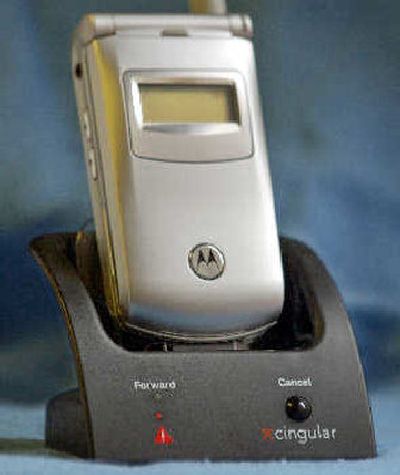Why can’t one charger boost all devices?

WASHINGTON – Charge!
As Americans are more and more consumed by their consumer electronics, they are finding those ultralight cell phones, Bluetooth devices, MP3 players and the like are useless without their heavy, homely cousins, those clunky “wall-warts” that deliver life-sustaining juice.
Chargers – they’re the ugly sidekicks of the latest gadgets.
Chances are you’ve got a drawer full of them at home right now. If you have kids, it’s probably two drawers.
If you travel for work, your briefcase probably contains a rat’s nest of the wiry little devils.
So why can’t one charger meet all our digital-age demands? Why can’t the same charger that brings your cell phone to life also power the portable DVD player or digital camera?
Why do major manufacturers of consumer electronics produce dozens of different chargers for their products instead of making life easier for consumers?
“The answer is very simple: It’s the free market, and they can do whatever they want,” said Zivan Zabar, a professor of electrical engineering at the Polytechnic University in Brooklyn.
“There is no technical reason why these things could not be standardized. It’s just free market competition, and people want to earn more money.”
Ryan McIntyre is a venture capitalist from the San Francisco Bay area who travels for business at least a couple of times a month. He carries with him a laptop, cell phone, two iPods, a Bluetooth headset, a Sidekick for e-mail, a digital camera and a tangle of chargers to keep everything going.
“There is not a lot of user outcry yet, but it’s coming. It’s a frustration that is sort of diffuse enough that not a lot of people are articulating it, but there is some amount of anger out there,” said McIntyre, who has complained about the problem in his blog, ryanmcintyre.com.
“I mean, there have certainly been enough people stranded without a charger, and all of a sudden they can’t use their cell phone. It is striking more and more people as a little bit insane,” McIntyre said.
The charger question was broached a few weeks ago by none other than America’s domestic diva Martha Stewart during the recent “D: All Things Digital” conference in Carlsbad, Calif., sponsored by the Wall Street Journal.
Stewart rose during a question-and-answer session with Sony CEO Howard Stringer, produced a tangled handful of wires, and asked why her digital devices and their respective chargers can’t all get along.
Stringer, according to Walt Mossberg, the Journal columnist who was conducting the session, responded he had “a sneaking suspicion it’s because the last three years, the most profitable business at Sony was the component division,” which makes chargers.
Matt Swanston, director of business analysis at the Consumer Electronics Association, which represents Sony and virtually all of its major competitors, said it’s not just profit that fuels charger diversity.
“From an engineering standpoint, each device has very specific power requirements,” he said. “Each different type of battery has to be charged a little bit differently.
“It’s like BMW being very specific about wanting only BMW parts used on their cars.”
He also said there has been little movement toward standardization because consumers have not demanded it: “It’s not a deal-killer for people. When they look at consumer electronics, they’re not going to not buy it because of the charger.”
Jonathan Steuer, a vice president and strategist with Iconoculture, a Minneapolis-based consumer research and strategy consulting firm, agreed there has been little consumer uproar so far.
“You would think that at some point consumers would band together and demand it, or companies would band together to do something about it, but that just hasn’t happened,” he said.
Steuer also noted that alternatives are arriving. Most promising, perhaps, is that many current-generation consumer electronics can be charged through USB ports on computers or with a $10 device that turns any wall electrical socket into a USB port.
Other solutions include devices like the iGo system from Mobility Electronics Inc., which includes car or wall chargers matched with a variety of tips to fit various devices.
The charger itself costs about $60, and tips for cell phones, DVD players, cameras and so forth cost about $10 each.